Case Summary
A complex and time-intensive quoting process was slowing down operations across the client’s 15+ business units. The client partnered with SLK to streamline its Engineer-to-Order (ETO) processes. By transitioning to a Configure-to-Order (CTO) model SLK helped the client reduce quote turnaround time, improve pricing consistency, and empowered its teams with intelligent automation.
The Challenge
The client was grappling with an inefficient quoting process that hindered responsiveness and scalability. The organization operated across 15+ business units (BUs), each with distinct systems, product catalogues, and pricing models. When a customer requested a quote, the teams had to coordinate across business units to assemble technical and commercial inputs. Most quotes, even for repeatable configurations, were treated as ETO.
This approach often led to extensive back-and-forth between departments and required significant engineering involvement. This inefficient process resulted in high quoting costs and delays in customer response. In addition, pricing and discounting decisions relied heavily on individual experience and tribal knowledge leading to quote inconsistencies.
The client wanted to simplify, standardize, and accelerate this process without compromising accuracy or flexibility, especially for complex, multi-line orders.
The Solution
SLK collaborated with the client to transition from an ETO-heavy process to a CTO-driven model. The engagement focused on five key areas:
- Product standardization: Simplified and streamlined product structures across business units, reducing the need for custom engineering in common scenarios.
- Guided, intelligent configuration: Introduced advanced tools to help teams size, select, and price products based on predefined technical and commercial logic. These tools supported accurate, rules-based configuration at speed and with consistency.
- Visual and interactive interfaces: A visual interface allowed sales teams, and in some cases, customers, to configure products interactively. This reduced the need to rely on engineering support for every request. The intuitive system ensured ease of use across geographies and roles.
- Process automation: Repetitive activities such as bulk configuration, validation, and testing were automated, reducing manual effort and speeding up delivery. This ensured scalability for large orders that sometimes involved over 200 individual product lines.
- Systematized knowledge: Configuration rules, pricing logic, and tribal knowledge were codified into the system, reducing dependency on specific individuals and making processes repeatable and scalable.
